
Our Trip To Washington, June 2005

OLYMPIC PENINSULA TREES
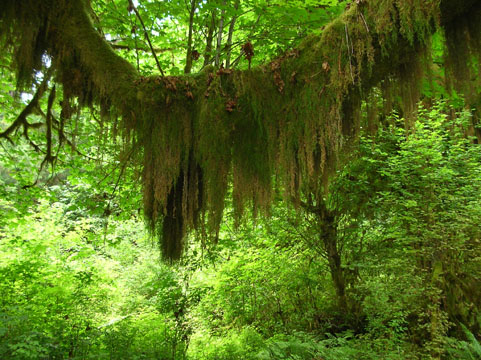
Tree branch in the Hoh Rainforest hung heavily with clubmoss, which lives off water vapor and air.
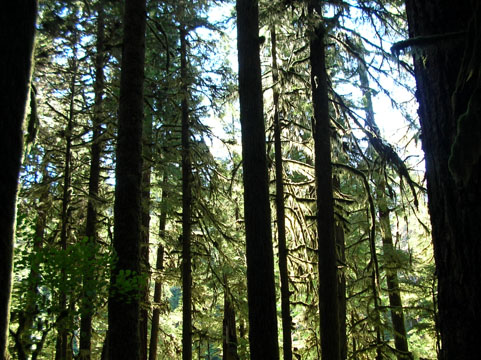
Late afternoon photo taken in the rainforest on the way to Sol Duc Resort. I love the ghostly effect of the light on the clubmoss covering the branches.
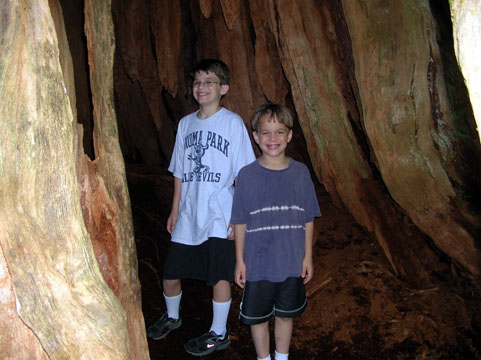
Daniel, Adam, Paul and myself could easily have fit into this gap at the base of this enormous spruce tree.
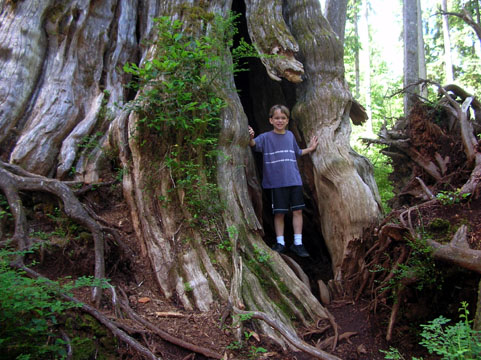
Here's Adam inside the trunk of an enormous red cedar tree in Quinault Indian territory.
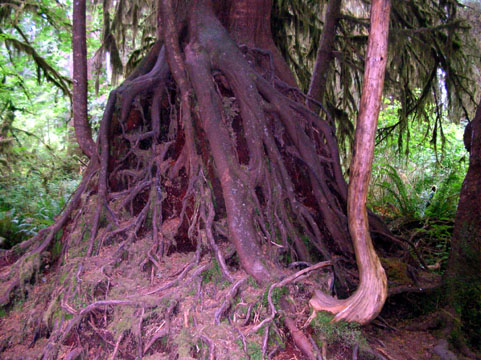
When a tree falls and other trees sink their roots into its trunk to absorb its nutrients, it is called a nurselog. Often the nurselogs eventually rot away, leaving these spectacular root formations many feet above the ground.
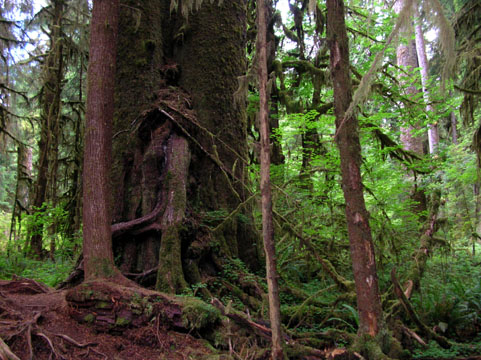
Here are a pair of trees of average enormity for the Hoh Rainforest, growing out of a nurselog with their roots wrapped around each other.
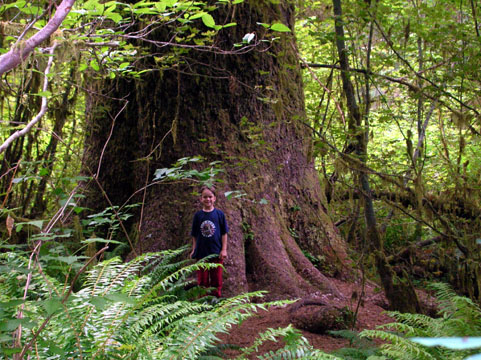
Some size comparison -- Adam and a tree.
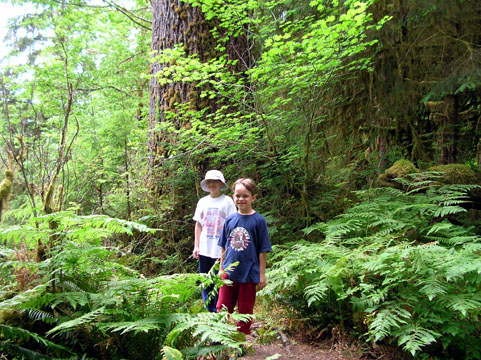
Here are Daniel and Adam deep in the woods.
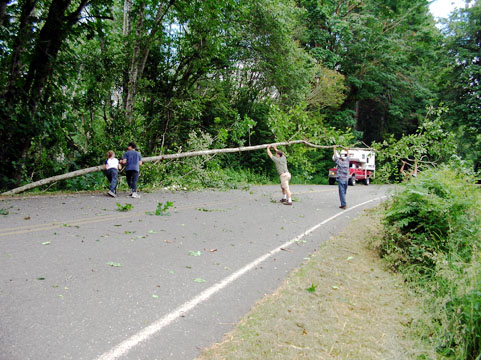
A tree down in the road on the way back from Madison Falls (it wasn't there when we arrived at the visitor's center). Five vehicles stopped and people got out to push but we were all stuck until a camper came along with an axe.
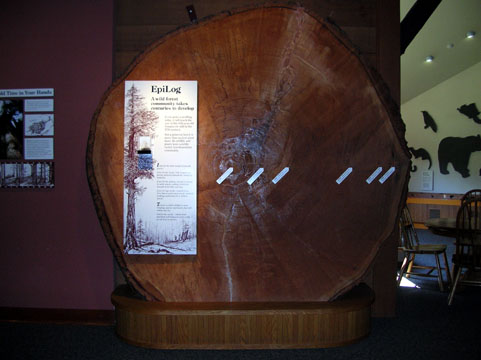
A slice of an enormous fallen tree in the nature center at the Olympic National Park Visitor's Center.
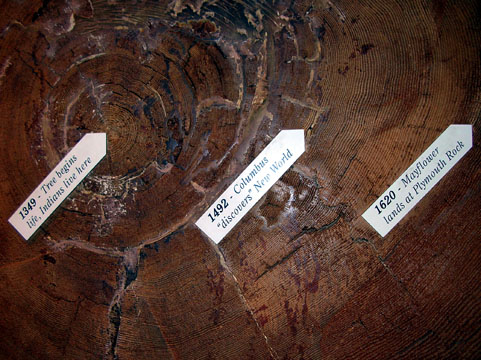
In close-up, you can see that this tree began life in the mid-1300s. These trees can live to be over a thousand years old if left to their own devices and in their proper environment. If this one had had a way to travel, it could have seen the first performance of Hamlet and the moon landing.
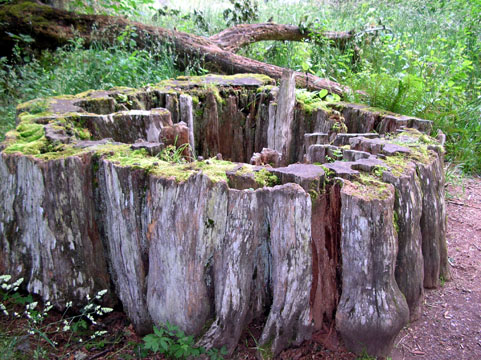
The pit inside this stump goes more than five feet down. It is at least six feet across, too.
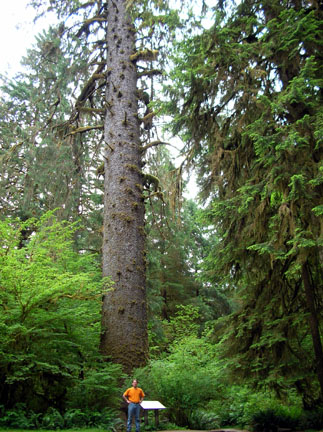
Paul at the foot of one of the enormous Sitka spruces. This photo was actually taken from across the street, and I still couldn't fit half the tree in the frame.

CLICK FOR PAGE 5 / CLICK FOR A TRIP REPORT
RETURN TO MY PHOTOS / RETURN TO THE LITTLE REVIEW
